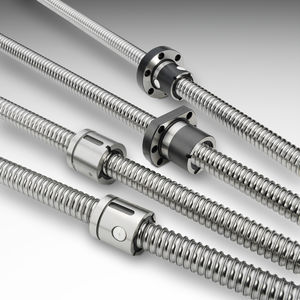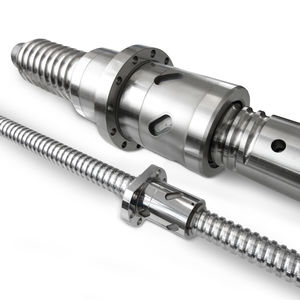
- Power Transmission - Mechanical components
- Mechanical Transmission
- Metal ball screw
- Thomson Industries, Inc.
- Company
- Products
- Catalogs
- News & Trends
- Exhibitions
Miniature ball screw KG seriescarbon steelprecisionhigh-speed


Add to favorites
Compare this product
Characteristics
- Material
- carbon steel
- Performance
- precision, high-speed, high load capacity
- Other characteristics
- miniature, with back nut, metric
- Diameter
8 mm, 10 mm, 12 mm
(0 in, 0 in, 0 in)- Load rating
Max.: 8.9 kN
Min.: 2.1 kN
Description
German-engineered and manufactured miniature precision ball screw sizes that provide best-in-class load capacity in a small footprint. The Thomson miniature metric ball screw line uses a unique multi-start ball return design that maximizes support for higher loads. This design provides precise, smooth, and quiet operation for applications requiring high precision and load handling in confined spaces.
Applications
- Diagnostic and life science instruments, such as chemistry analyzers
- Test and measurement equipment, such as torque testers
- Fluid pumping, such as medical infusion pumps
- Robotics and pick & place equipment, such as engraving, scanning and printing machines
- Punching machines, which can require high-speed movement.
Availability
New Thomson miniature metric ball screws with the multi-liner ball return system are now available in 8 x 2.5, 8 x 5, 10 x 2, 10 x 3, and 12 x 2-mm diameters. Additional size options are currently under development. Mounting interface options include threaded, flanged or cylindrical.
All options feature carbon steel construction, high-performance repeatability (0.05 mm backlash), and ± 52 µm / 300 mm standard lead accuracy (T7). Miniature metric ball screws can also be ordered with higher lead accuracy, preloading and custom coatings such as thin dense chrome and black oxide coating.
Catalogs
No catalogs are available for this product.
See all of Thomson Industries, Inc.‘s catalogsRelated Searches
- Ball screw
- Lead screw
- Metal shaft
- Metal ball screw
- Steel ball screw
- Precision ball screw
- Lead screw with nut
- Precision shaft
- Rolled ball screw
- Anti-backlash lead screw
- Stainless steel lead screw
- Stainless shaft
- Ground ball screw
- Custom lead screw
- High load capacity ball screw
- Compact ball screw
- Miniature ball screw
- Aluminum shaft
- Ball screw with back nut
- High-speed ball screw
*Prices are pre-tax. They exclude delivery charges and customs duties and do not include additional charges for installation or activation options. Prices are indicative only and may vary by country, with changes to the cost of raw materials and exchange rates.











